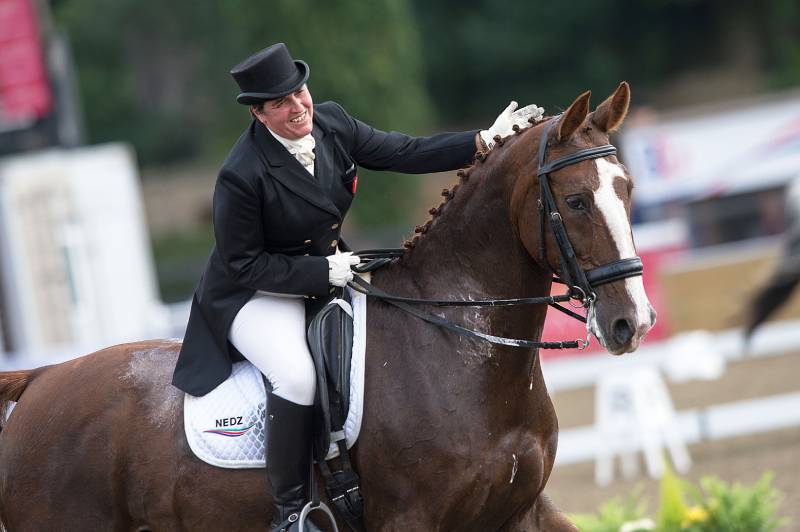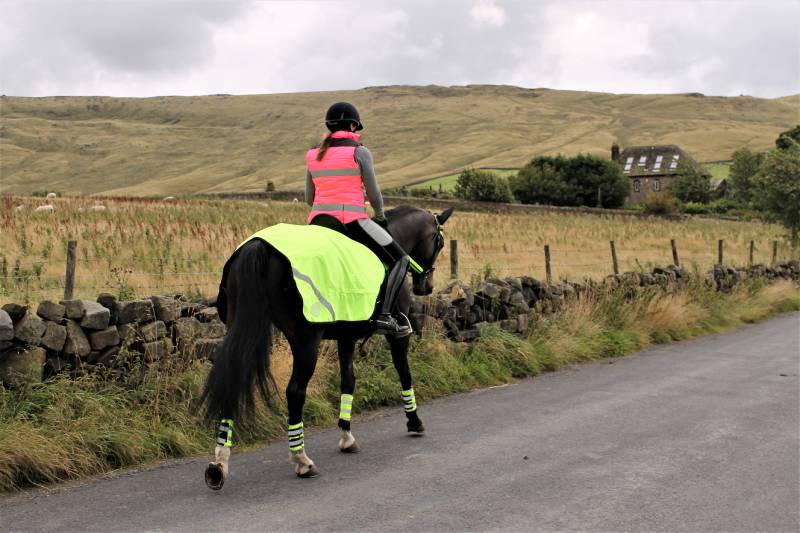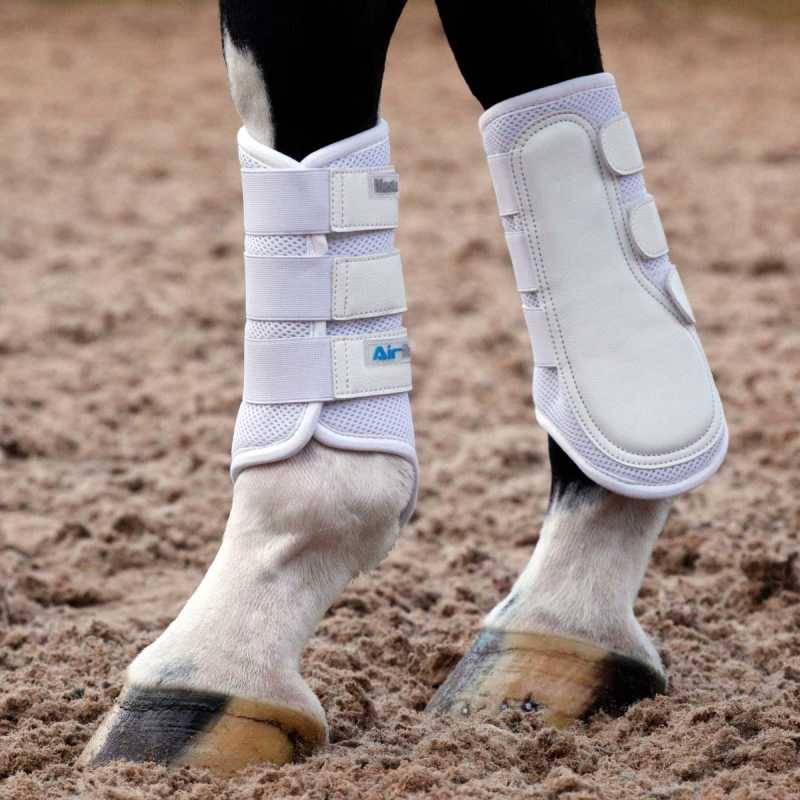
In the second blog of our Dressage Debunked series, International dressage rider, trainer and judge Steph Croxford discusses the first lateral move you would teach a horse – the leg yield. We look at what leg yielding is, the purpose of it and how to ride it.
What is leg yielding?
Leg yielding is a lateral movement where the horse slightly looks away from the direction in which the horse is going. It’s the first movement you would teach a horse that requires them to go sideways and forward at the same time while keeping their body straight. It teaches a horse to move away from your leg and move through their body, and useful to introduce young horses to the outside rein by teaching them to push off the inside leg aid into it. It can be ridden in walk, trot and canter.
Dressage levels explained
You will find leg yield only in Elementary level dressage tests under British Dressage rules.

The purpose of leg yielding
Leg yielding helps horses become more flexible in their shoulders, back and hips and helps the horse feel a connection in their whole body. Your horse will learn to move away from your inside leg and from a riders’ point of view, it’s a great exercise to start with to introduce different leg and bodyweight signals.
A lot of riders like using leg yield as a warm-up exercise because as the horse’s legs cross over one another, the horse’s muscles and joint loosen and stretch which in turn helps relaxation, breathing and softness through the back.
British Dressage goes into more details by explain the aim of leg yielding is to demonstrate the suppleness and lateral responsiveness of the horse. Leg yielding is performed in working trot in FEI competitions. The horse is almost straight, except for a slight flexion at the poll away from the direction in which it moves so that the rider is just able to see the eyelashes and nostril on the inside. The inside legs pass and cross in front of the outside legs.
Leg yielding should be included in the training of the horse before it is ready for collected work. Later on, together with the more advanced shoulder in movement, it is the best means of making a horse supple, loose and unconstrained for the benefit of the freedom, elasticity and regularity of its paces and the harmony, lightness and ease of its movements.
Leg yielding can be performed on the diagonal in which case the horse should be parallel to the long sides of the arena, although the forehand should be slightly in advance of the hindquarters. It can also be performed along the wall in which case horse should be at an angle of about thirty-five degrees to the direction in which he is moving.
Watch and listen to dressage rider, trainer and judge Steph Croxford explain how to ride leg yield:
How to leg yield
One thing to remember when teaching your horse to leg yield is that they should look slightly away from the direction in which you're going – you're aiming for about 30% or as Steph explains below, think of it in terms of a clock face:
"When I’m teaching a horse to leg yield, I like to ride it so that I have got its body parallel to the long side, I would turn in, on say the quarter line of the long side and as I turn onto the quarter line, I think about pushing the horse’s hindquarters over to the side of the arena.
In terms of how much bend, you’re looking for your horse to look at 11 o'clock on the left rein and 1 o’clock on the right rein.
The aids for leg yield require communication between the inside aids and the outside aids. The inside leg asks the horse to yield to the side away from the leg, while the outside leg asks the horse to continue forward, maintaining straightness and keeping the rhythm. The outside rein stops their shoulders from falling out and controls the speed. The inside rein communicates how much bend is required. Where you place your leg depends on how your horse’s body is responding to the aids.
Once you start leg yielding, if you find that the quarters are leading, ride forwards for a few strides while still having slight neck flexion away from the movement, then wriggle your outside rein to ask the horse to start moving that way. Depending on where you put your leg on their side, your horse should know which part of its body needs to go where.
For example, if you put your leg further back that would tell its bum to move over, if you kept the leg hanging down where you would naturally have it that would tell him the barrel needed to move over and if you put your leg forward that tells him to lead with the shoulder. So remember that your legs tell the horse what part of his body needs to go where and it's crucial you learn that at this stage. As you go further up through the advanced moves you need to be able to clearly communicate to your horse, which part of its body needs to be where at any moment in time.
Dressage Debunked
Learn more from Steph Croxford with Dressage Debunked by reading our previous post, about mastering the Dressage Warm Up or our next post, How to Ride Travers.
Where to practice leg yielding
Leg yielding can be practiced in an arena or while out hacking. If the traffic conditions allow while hacking, practice moving your horse from left to right on the road, using the same aids as you would in an arena.

It can also help keep a horse’s attention on you and it is a great way to keep on top of your horse’s schooling if you do not have regular access to an arena.
What other professionals say...Anna Ross-Davies' advice on how to ride leg yield
“It’s a movement we teach horses very early in their training, so they understand the feeling of moving away from pressure from the leg, on the ground and in the stable. With the leg yield, you’re looking for the horse to keep straight in their body, with slight neck flexion away from the direction they’re going. Keep the rhythm and move evenly. You don’t need speed for this movement so make sure your outside rein is controlling the speed to keep it at an even tempo. If you have too much bend the horse will fall out through the shoulder and will lose straightness in the body. We recommend trying this move-in walk first and progressing through the gaits when you feel ready.”
Additional sources to learn how to leg yield
Learn to release the back muscles and achieve that all-important ‘swing’ with Adventures with Jenku
Protect your horse’s legs
The Masta Air Flux brushing boots, available in black or white are made from a special 3D spacer air mesh which encourages air flow and prevents unwanted heat and sweat build up. Highly durable yet lightweight, these boots are extremely versatile for all disciplines and will help protect your horse’s legs as they learn to leg yield. Featuring a durable faux leather strike pad to the inside, this helps to protect the leg from any impact, knocks or scraps. Three hook and loop fastenings with elasticated straps allow an easy and secure fit, perfect for everyday or competition use.

